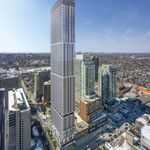rbt
Senior Member
$1.43 Billion for 11 km of elevated/underground rail. How? In Toronto, we'd hardly be able to build surface LRT with those funds.
It's not repeatable for Vancouver either. SNC-Lavalin underbid; they didn't do well on the project; some quarters their shortfall was in the tens of millions of dollars (peaked at ~$40M for a single quarter loss IIRC). That would add a couple hundred million to the pricetag if they got to redo the bid.
Being an extension they didn't need to build any new maintenance facilities or yard space. 28 LRVs are included in that price tag. IIRC Finch West yard/facilities are about 10% of the price ($120M) so there's another $160M saved on Evergreen.
28 LRVs in a controlled environment (grade separated) is quite a bit cheaper than 23 LRVs in a mixed environment (Finch). These 2 projects are interesting because they're about the same length. LIM yards are relatively expensive but this project didn't need any yard changes.
Building identical stations helps with design costs. Tunnels are actually cheap (Eglinton LRT was around $60M/km including TBMs); it's the stations and emergency exits are make them expensive. IIRC, the Evergreen tunnel is short enough it doesn't have any emergency escapes; so the 2.2km tunnel would be a ~$140M bore here. Eglinton looked at single-bore, as used on Evergreen line, but the soil wasn't stable enough to support that so a double-bore was used. Evergreen also didn't go very deep with extraction shafts either as the line was coming up to run at ground level.
Evergreen stops are about every 2km with the biggest gap being the tunnelled section (2.4km between stops there?). No buses are expected to be removed from service; 22 routes got modified. Finch, with 3x the number of stops, is expecting to take 35 buses out of service. I suspect operations costs will be roughly the same between Finch and Evergreen (Evergreen has much more maintenance requirements/elevators/etc. but Finch has drivers). Evergreen will definitely carry more people but that's demographics rather than a capacity constraint on Finch.
That's all I've got from the top of my head. A full breakdown by Metrolinx of Finch versus Evergreen would be interesting to see.
Last edited:




